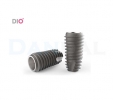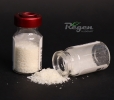In light of that topic, we have an excellent article by one of our Implants Today advisory board members, Dr. Craig Misch. Craig offers the unique perspective of having dual specialties in oral surgery and prosthetics. In his article, entitled “A ‘Graft Less’ Approach to Posterior Implant Sites,” he discusses how older paradigms of relying on bone grafts to place dental implants can now be avoided in many circumstances by utilizing shorter implants. This is a strategy that was not available just a few years ago, and because of the advancement of materials and implant design, it is now a reality backed by studies showing success. It represents a strategy change as an implant surgeon. Dr. Misch’s article is especially notable to me as a clinician practicing implant dentistry, as some previous paradigms that I had learned under the mentorship of his brother, the late Dr. Carl Misch, are now being challenged. I say this with total respect, as this is how it should be after pioneering concepts are created and introduced; it is called evolution.

When any strategy is formulated, it is based upon information that creates a plan to reach a goal. The goal for implant dentists is to restore form and function for the patient in the easiest, most predictable manner. In this month’s article, Dr. Misch gives an example of being able to place shorter implants, avoiding the need for sinus grafting. The rationale of obtaining proven results, with a less invasive procedure based on technology, is a strategy that makes sense as a practitioner.
Another paradigm we are seeing with a similar end result of less invasive surgery for our patients is utilizing a one-tooth cantilever for full-arch, implant-supported, screw-retained zirconia bridges. This is a proven alternative that involves fewer implants, more retrievability, less grafting, and shorter treatment times than a cement-retained implant bridge. The option of a cement-retained porcelain-fused-to-metal bridge does not offer reliable retrievability and often requires extensive bone grafting for the same result. When a strategy is created for a plan, the latest techniques and materials must be considered.








